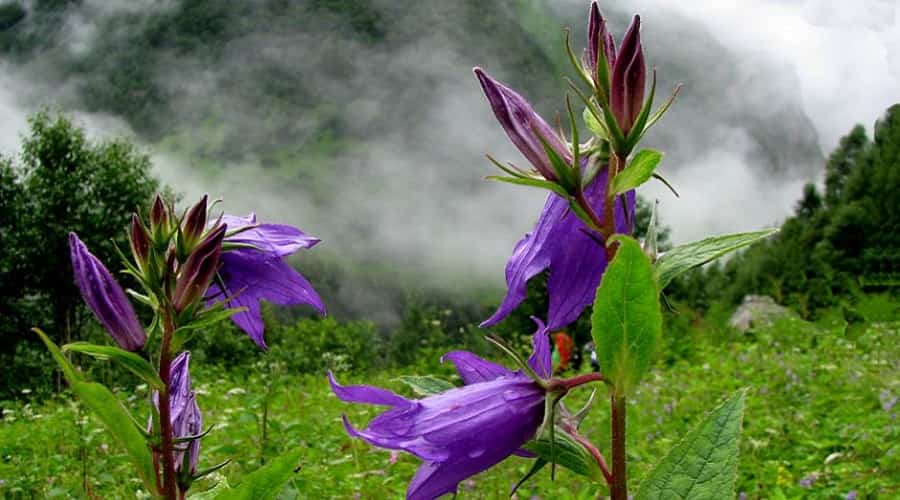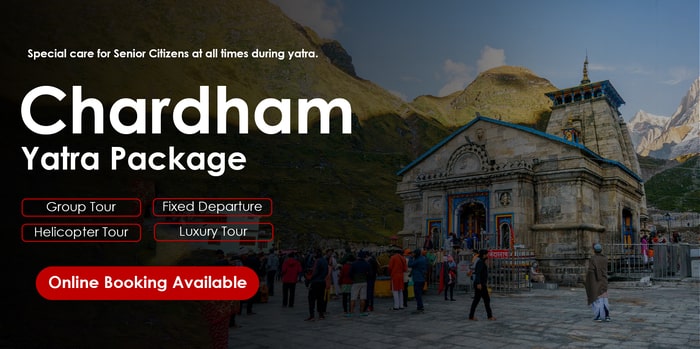Embarking on the Valley of Flowers trek promises an adventure of a lifetime amidst the breathtaking landscapes of Uttarakhand’s Himalayan region. To ensure a smooth and rewarding journey, it’s essential to equip yourself with the right knowledge and preparations. Here are comprehensive travel tips to guide you through every aspect of your Valley of Flowers trekking experience.

Location
The Valley of Flowers is situated in the West Himalayan region of Uttarakhand, India. It lies within the Nanda Devi Biosphere Reserve, near the town of Joshimath in the Chamoli district.
Best Time to Visit
The Valley of Flowers is accessible from June to October, with the peak blooming season occurring between July and August. June offers a lush green landscape with the onset of monsoon, while July and August showcase a riot of colors with the blooming of numerous alpine flowers. September and October offer pleasant weather with fewer crowds, making it an ideal time for peaceful trekking.
How to Reach
By Air: The nearest airport is Jolly Grant Airport in Dehradun, approximately 295 kilometers from Joshimath. From Dehradun, you can hire a taxi or take a bus to reach Joshimath.
By Train: The nearest railway station is Rishikesh, around 270 kilometers from Joshimath. From Rishikesh, you can hire a taxi or take a bus to reach Joshimath.
By Road: Joshimath serves as the base for the Valley of Flowers trek. You can reach Joshimath by road from major cities like Dehradun, Rishikesh, and Haridwar. From Joshimath, hire a taxi or take a shared jeep to Govindghat, the starting point of the trek.
Weather
The weather in the Valley of Flowers varies depending on the season. During the trekking season from June to October, daytime temperatures range from 15°C to 25°C, while nighttime temperatures can drop to 5°C to 10°C. It’s essential to be prepared for sudden weather changes, including rain showers and occasional snowfall, especially at higher altitudes.
Route Map
The Valley of Flowers trek typically follows this route:
- Start from Govindghat and trek to Ghangaria: The trek begins from Govindghat, where you cross the Alaknanda River and follow a well-marked trail to Ghangaria, a distance of approximately 13 kilometers.
- Ghangaria to Valley of Flowers: From Ghangaria, trek to the Valley of Flowers, covering a distance of about 4 kilometers. The trail passes through dense forests, meadows, and streams, offering panoramic views of the surrounding mountains.
- Exploring the Valley of Flowers: Spend a day exploring the Valley of Flowers, marveling at its diverse flora, including rare alpine flowers like the blue poppy, brahmakamal, and cobra lily.
- Ghangaria to Hemkund Sahib: Optionally, trek from Ghangaria to Hemkund Sahib, a sacred Sikh pilgrimage site located at an altitude of 4,575 meters. The trail is steep and challenging but offers stunning views of the Hemkund Lake and surrounding peaks.
- Return to Govindghat: After exploring the Valley of Flowers and Hemkund Sahib, trek back to Govindghat following the same route.
Travel Tips
Preparation and Training
- Physical Fitness: Prioritize physical fitness to tackle the trek’s challenges. Engage in regular cardiovascular exercises like walking, jogging, or cycling to build stamina and endurance.
- Strength Training: Incorporate strength training exercises to strengthen your leg muscles, core, and back, essential for navigating steep inclines and uneven terrain.
- Altitude Acclimatization: The Valley of Flowers trek reaches high altitudes, so acclimatize yourself gradually to prevent altitude sickness. Consider spending a few days in nearby towns like Joshimath or Ghangaria to adjust before starting the trek.
- Medical Check-up: Consult with a healthcare professional before embarking on the trek, especially if you have any pre-existing medical conditions. Discuss altitude sickness prevention strategies and ensure you’re fit for high-altitude trekking.
Packing Essentials
- Clothing: Pack lightweight, moisture-wicking clothing suitable for layering. Include thermal innerwear, trekking pants, breathable t-shirts, fleece jackets, and a waterproof outer shell. Don’t forget extra pairs of socks and comfortable trekking shoes with good grip.
- Gear and Equipment: Carry a sturdy backpack with padded shoulder straps and a waist belt for even weight distribution. Essential gear includes a trekking pole for stability, a headlamp or flashlight with extra batteries, a multi-tool or knife, a first aid kit, sunscreen, and sunglasses.
- Sleeping Gear: If camping overnight, bring a lightweight sleeping bag suitable for the prevailing weather conditions and a compact sleeping pad for insulation and comfort.
- Food and Water: Pack high-energy snacks like nuts, energy bars, chocolates, and dried fruits to keep you fueled throughout the trek. Carry a refillable water bottle or hydration pack and purification tablets or a water filter to ensure a clean water supply.
- Personal Hygiene: Pack travel-sized toiletries, including biodegradable soap, hand sanitizer, wet wipes, and toilet paper. Opt for eco-friendly options and minimize waste by carrying a small trash bag to pack out used items.
- Navigation and Communication: Bring a detailed map or guidebook of the trekking route, a compass or GPS device, and a fully charged mobile phone with emergency contact numbers saved. Consider carrying a portable charger or solar charger to keep your devices powered.
Health and Safety
- Altitude Sickness Prevention: Ascend gradually to higher altitudes, allowing your body time to acclimatize. Stay hydrated by drinking plenty of water and avoid alcohol and caffeine, which can exacerbate dehydration. Recognize symptoms of altitude sickness such as headache, nausea, dizziness, and fatigue, and descend immediately if symptoms worsen.
- First Aid: Carry a comprehensive first aid kit containing essential medications for common ailments like headaches, stomach upsets, blisters, and allergies. Include basic wound care supplies, adhesive bandages, antiseptic wipes, and pain relievers.
- Emergency Protocol: Familiarize yourself with emergency evacuation procedures and the nearest medical facilities along the trekking route. Share your trekking itinerary with a trusted friend or family member and check in regularly using a satellite communicator or mobile phone.
- Weather Awareness: Stay informed about weather forecasts and be prepared for sudden changes in weather conditions. Dress in layers to adapt to temperature fluctuations and carry waterproof gear to protect against rain and snow.
- Wildlife Safety: Respect the natural habitat and wildlife of the Valley of Flowers. Stay on designated trails, avoid disturbing plants and animals, and refrain from feeding or approaching wild animals.
Environmental Responsibility
- Leave No Trace: Follow the principles of Leave No Trace ethics to minimize your impact on the environment. Pack out all trash, including food wrappers, tissues, and cigarette butts, and dispose of waste properly at designated facilities.
- Responsible Camping: If camping overnight, choose established campsites whenever possible and avoid setting up camp near water sources or fragile vegetation. Practice Leave No Trace camping techniques, including minimizing campfire impact and using biodegradable toiletries.
- Respect Local Customs: Show respect for the culture and traditions of local communities you encounter along the trekking route. Seek permission before photographing people or religious sites and adhere to any cultural norms or restrictions.
- Support Sustainable Tourism: Choose eco-friendly trekking operators and accommodations that prioritize sustainability and environmental conservation. Opt for locally sourced meals and souvenirs to support the local economy.
Final Tips and Recommendations
- Group Dynamics: If trekking in a group, communicate openly with your fellow trekkers and support each other throughout the journey. Stay together, especially in challenging terrain, and practice teamwork and mutual assistance.
- Mindful Photography: Capture the beauty of the Valley of Flowers responsibly by minimizing your impact on the environment. Avoid trampling vegetation or disturbing wildlife for the sake of a photo and practice ethical wildlife photography guidelines.
- Enjoy the Journey: Embrace the serenity and natural beauty of the Valley of Flowers trek, allowing yourself to fully immerse in the experience. Take time to appreciate the stunning landscapes, vibrant flora, and unique biodiversity of this Himalayan paradise.
By following these comprehensive travel tips, you’ll be well-prepared to embark on an unforgettable trekking adventure through the picturesque landscapes of the Valley of Flowers. Stay safe, tread lightly, and savor every moment of this extraordinary journey amidst nature’s wonders.
Suggested Tour:



 Call
Call WhatsApp
WhatsApp Enquiry
Enquiry